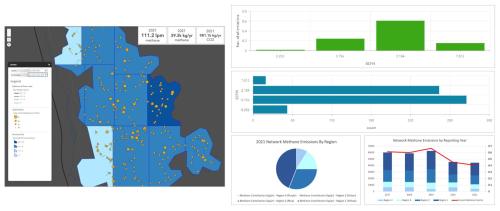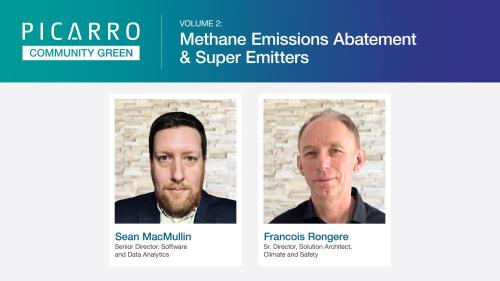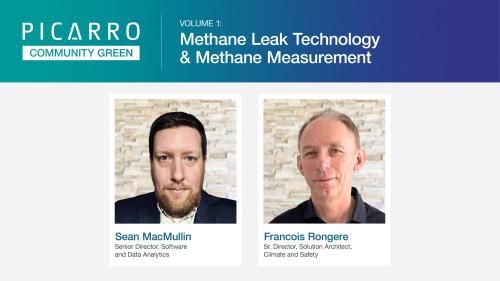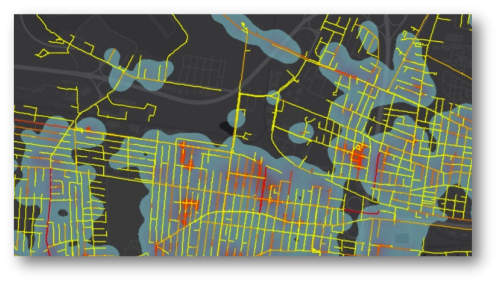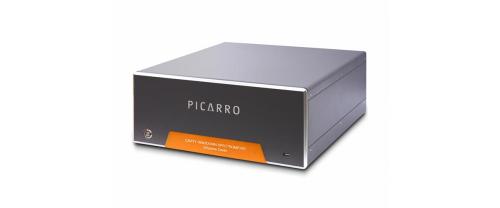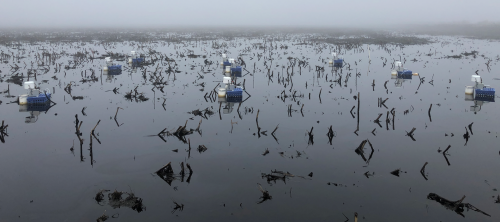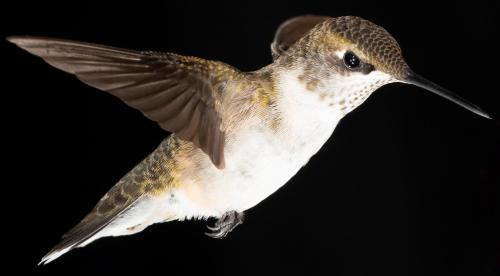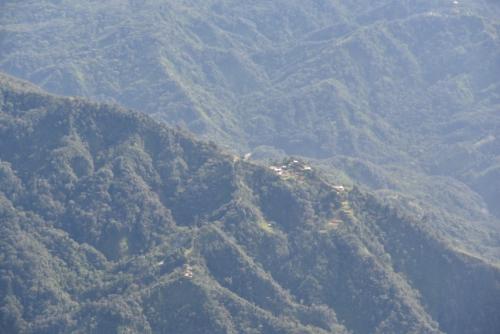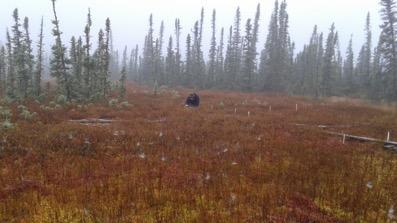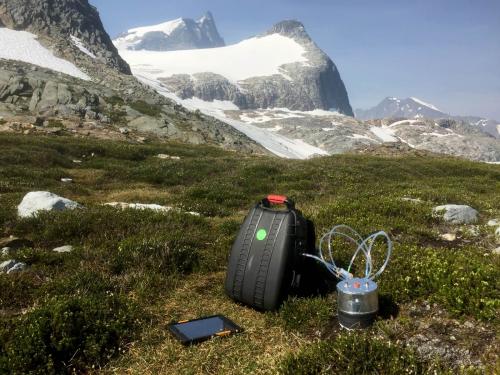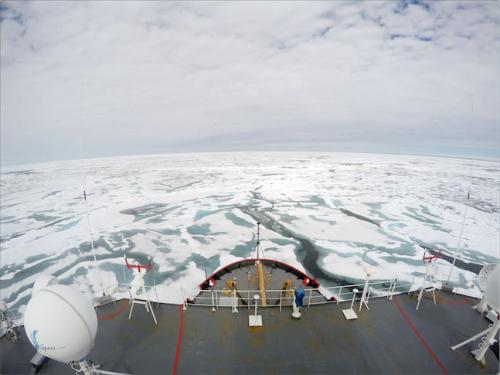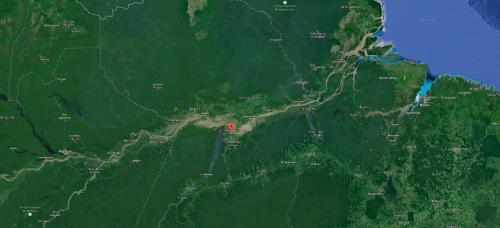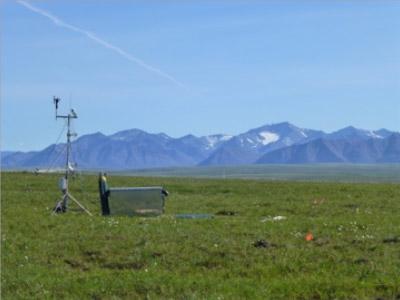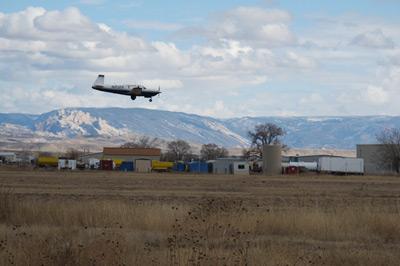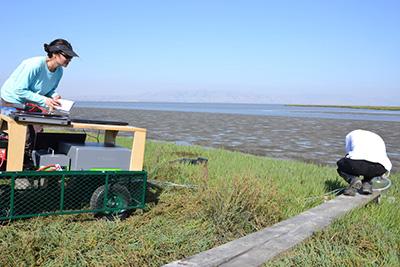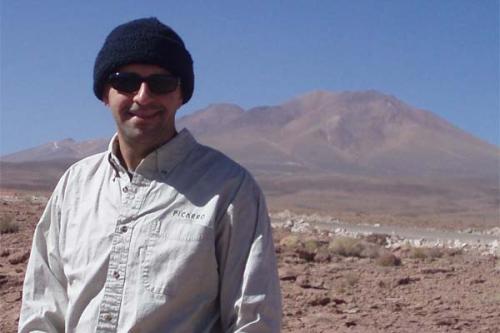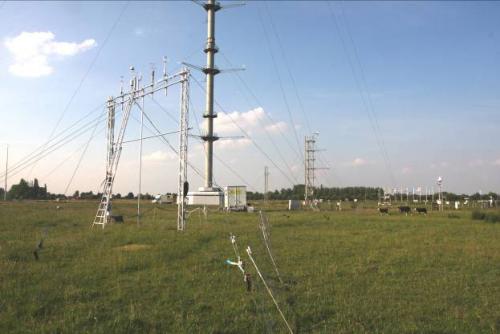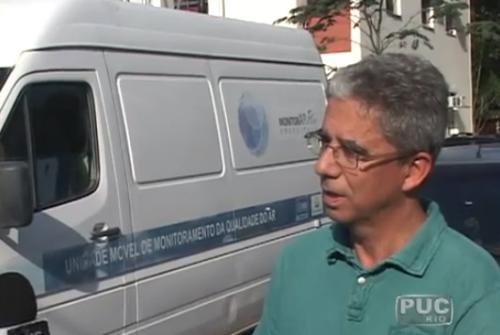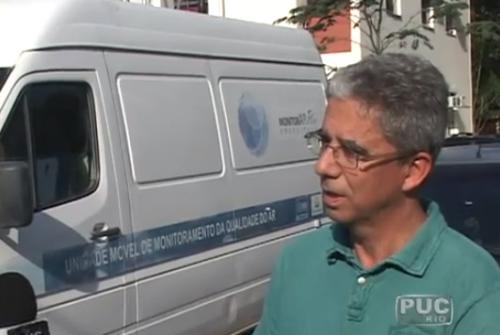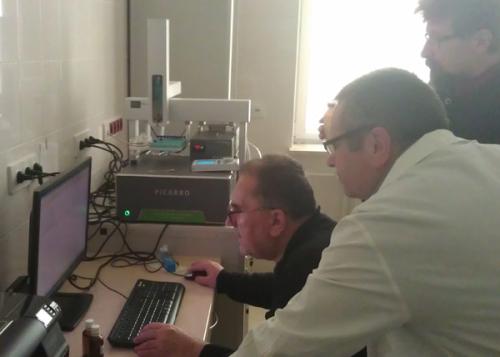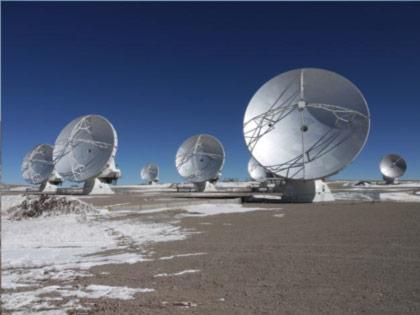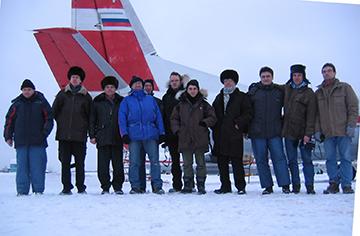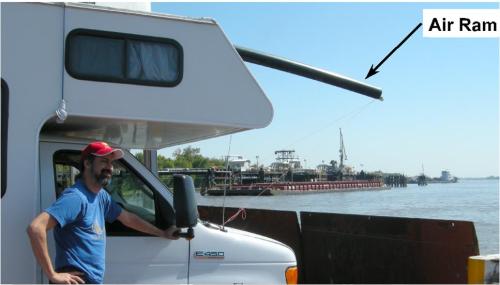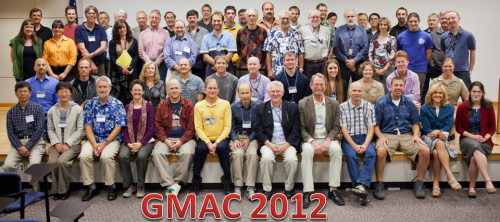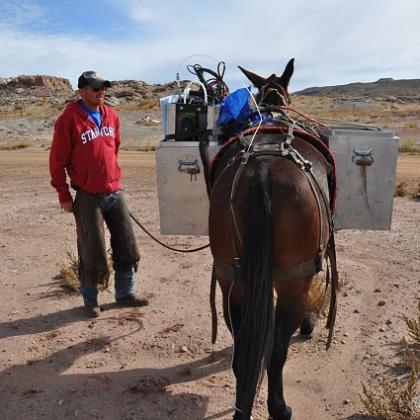G2308 Analyzer Datasheet
Data SheetThis product has been discontinued. Please reference our replacement analyzer G2508.G2203 Analyzer Datasheet
Data SheetThis product has been discontinued. Please refer to our Discontinued Products for information on replacement analyzers.GasScouter™ G4301 Analyzer Datasheet
Data SheetThis product has been discontinued. Please refer to our Discontinued Products for information on replacement analyzers.Navigating EtO Compliance Amid Regulatory Uncertainty
BlogWith recent regulatory changes and political shifts, sterilization facilities are facing increased uncertainty. One thing is clear: operators will need more efficient emissions reduction strategies and compliance best practices to maintain long-term operational stability. In this blog, Picarro experts describe what to expect and how to address regulatory compliance.PI5310 – The Ultimate Solution for Set-and-Forget Atmospheric N2O and CO Monitoring
BlogIn the global effort to understand and combat climate change, networks across the world are monitoring greenhouse gases (GHGs). With their unique, high-precision CRDS technology, Picarro analyzers are used in many of these networks, including at all Integrated Carbon Observation System (ICOS) Atmosphere Thematic Centre networks. With the introduction of the PI5310 Nitrous Oxide (N2O) and Carbon Monoxide (CO) analyzer, Picarro provides the best solution for N2O and CO atmospheric monitoring that meets and exceeds World Meteorological Organization (WMO) compatibility goals and ICOSTop 3 Reasons You Should be Working with Picarro for Ethylene Oxide CEMS Compliance as a Commercial Sterilizer
BlogPS-19 Test Results Show Picarro CRDS Far Outperforms OE-FTIR
The US EPA recently finalized the updates to 40 CFR 63, Subpart O (otherwise known as the Commercial Sterilizer National Emission Standards for Hazardous Air Pollutants/NESHAP). The updated rule came into effect through the Risk and Technology Review (RTR) and aims to address Ethylene Oxide (EtO, EO) emissions from point sources and room air emissions.Harmonizing Veritas and OGMP 2.0: A Unified Protocol for Gas Distribution Networks
BlogA year ago, Veritas and OGMP 2.0 embarked on a collaborative journey to harmonize their
Vehicle Selection Guide
BlogThis document will serve as a guide to selecting a suitable vehicle for use in Picarro AMLD drive survey usage.
Transforming Leak Detection and Repair: A Deep Dive into PHMSA’s Proposed Amendments
BlogWelcome to an exploration of the future of pipeline safety and environmental standards.
Picarro’s Innovative Solution for Detecting and Measuring Fugitive Methane Emissions
BlogNatural gas distribution system operators (DSO) around the world must detect and measure methane emissions to find and eliminate hazardous leaks, meet financial budgets and shareholder expectations, and address environmental, social, and governance (ESG) goals.
Emissions Measurement - Top Down or Bottom-Up?
BlogMethods of Estimating Network-Wide Gas Leak Flow Rates - Which is Best for Your Utility?
Community Green Volume 2: Methane Emissions Abatement & Super Emitters
BlogIn our recent podcast on methane abatement, part of our expert series, which features the perspectives of industry leaders on the challenges and advancements in gas and energy sectors, Picarro’s Francois Rongere, Senior Director Solution Architect, Climate and Safety, and Sean MacMullin, Senior Director of Software and Data Analytics, discuss the relationship between methane detection, quantification, and abatement programs, aiming to ill
Community Green Volume 1: Methane Leak Technology & Methane Measurement
BlogIn our recent podcast, we tackled the critical issue of methane data collection, leak detection and emissions measurement - uncovering the current state of the industry and its potential future directions.
Quantifying GHGs and Ammonia Fluxes in Soil to Advance Climate-Smart Agriculture
BlogA large proportion of GHGs and ammonia are emitted from agricultural soils. Finding ways to reduce these agriculture-induced emissions has the potential to mitigate climate change and air pollution. This blog will describe how the combination of the Picarro G2508 five-species gas concentration analyzer and the Eosense eosAC Automated Soil Flux Chamber is helping researchers understand and advance climate-smart agriculture.Gas Utilities Seek Digital Solutions to Reduce Methane Emissions and Ensure Public Safety
BlogGas operators are increasingly being challenged to reduce methane emissions, and to do so in a continuous, verifiable way. This challenge at its most extreme has some cities recently banning natural gas in new construction. Further, as the infrastructure ages, gas operators face challenges in managing budgets and unplanned work due to an accelerating rate of growth in the number of leaks emerging from leak-prone pipe. These pressures are driving the need to manage gas assets as cost-effectively as possible.Addressing the Need for Fenceline and Community Monitoring of Ethylene Oxide
BlogAs regulators implement new air quality standards targeted at commercial sterilization and chemical industries, there is a growing need for precise, turn-key monitoring systems that are proven to operate long-term at the fenceline and in communities. In this new blog, Dave Miller explains how Picarro is continuing to address this need with a recent addition to its family of ethylene oxide monitoring solutions.Controlling Workplace Exposure to Ethylene Oxide with Real-Time Indoor Air Quality Monitoring
BlogIndoor air quality is highly correlated with the health of employees in workplaces where toxic gases are present. Companies using EtO need to adopt new monitoring approaches that provide a fast response and are specific and sensitive to low concentration levels of fugitive emissions. This new blog describes how to better monitor fugitive EtO emissions in the workplace with Picarro EtO monitoring solutions.Formaldehyde Measurements in Northwest Oregon During the 2021 Summer Wildfire Season
BlogJonathan Bent, Ph.D., Senior Application Scientist, Environmental
Measurement Location:
ORDEQ Near-road Site
Tualatin, OR
45.3992°, -122.7458°Dr. Sze Tan: 20 Years of Developing New Applications for Picarro Technology
BlogDr. Sze Tan, Picarro’s Principal Scientist and Research Fellow, has spent 20 years at Picarro pushing the limits of our technology. Learn how a visit to a landfill resulted in a new market for Picarro analyzers.The Role of International Greenhouse Gas Monitoring Networks in Achieving Dual Carbon Goals
BlogPioneering countries are committing to reduce GHGs to achieve “dual carbon goals.” The implementation of their strategy relies on scientific monitoring and evaluation of emissions at local, regional, and continental levels. Learn how Picarro analyzers are used at every level.Mitigating the Risk of EtO Emissions in Commercial Sterilization Operations
BlogEthylene oxide (EtO) is frequently used in sterilization processes, however, hazards exist from exposure to this toxic gas. This blog reviews the evolving federal rules governing source and fugitive emissions and highlights how Picarro and partners are enabling companies to monitor emissions and generate the defensible data they need to comply.An Annual Service Plan: The Second-Best Decision You Can Make
BlogOne of the best parts of my day is seeing customers’ social posts about how and where they’re using Picarro instruments. Selecting a Picarro is the best decision you can make for your project. The second-best decision is purchasing one of our new annual service plans.Mobile Deployment of an Isotopic Carbon Analyzer to Complement Satellite GHG Data Models at Westlake University, China
BlogAt Picarro, we love when customers share their innovative integrations and applications of our analyzers in the field. This customer success story is highlighting Assistant Professor, Dr. Yuzhong Zhang of Westlake University, China. With the help of Beijing Cen-Sun Technology Development Co., our partners in China, Dr. Zhang recently set up a G2201-i within his car to obtain on-board GHG measurements. We are grateful to Dr. Zhang and Cen-Sun’s efforts for bringing us this wonderful story. Enjoy!
A New European Network of Young Researchers to Unveil Past Climate Changes in Antarctica
BlogPicarro is proud to support important climate science. We are a partner of the DEEPICE project, an innovative training network in instrumentation, ice core analysis, and glaciological and climatic modelling. For their new European collaboration, we’re excited to support training schools and host an intern to assist in the development of analytical methods for ice core measurements that will answer key questions about the impact of large climate shifts on the Antarctic ice sheet.Surrogate Gas Validation: A Safer, Easier Way to Validate Measurements of Hazardous, Corrosive, and Reactive Trace Gases
BlogHigh-precision trace gas measurements are required for a range of environmental research questions and for many industrial applications. However, hazardous, corrosive, and reactive gases can be difficult to trace, and the accuracy of standard gas concentrations can be unreliable. To solve this problem, Picarro has developed a method of surrogate gas validation for ammonia, hydrogen chloride, hydrogen peroxide, hydrogen fluoride, and formaldehyde.Investigating the Effect of Climate Change on Ecosystems by Imitating Future Environmental Conditions
BlogTo investigate how plant growth will be affected in the future, ecologists and plant biologists have setup Free-Air Carbon dioxide Enrichment (FACE) facilities in various ecosystems around the world that imitate elevated atmospheric carbon dioxide concentrations. A Picarro G2508 is being used at a FACE facility in Germany to investigate the response of a semi-natural grassland to changing environmental conditions.Ed Wahl, 20 Years a Picarroan!
BlogGoogle “Laser-Based Diagnostics of Diamond Synthesis Reactors” and one of the first things you’ll see is Ed Wahl’s Stanford PhD thesis from 2001. Back then he was applying Cavity Ring-Down Spectroscopy (CRDS) to measure absolute CH3 and CH radical concentrations and temperatures in a hot-filament CVD (HFCVD) reactor. Today, he’s Director of Test and Manufacturing Technology for Picarro where, instead of applying it to his research, he’s in charge of building it into Picarro analyzers for customers to use in their research.
Evaluating the Claims of Hydrogen Peroxide Generators to Minimize COVID-19 Transmission
BlogHydrogen peroxide has a long history as a pharmaceutical sterilizer at high concentrations, and the claim by these manufacturers is that extremely low levels of hydrogen peroxide (10-20ppb or 0.01ppm) will attract and kill viral particles while not impacting human health. Instead of just treating air as it returns, these solutions seek to keep a constant low level of hydrogen peroxide in all habitable areas of a building.The Ozone Has Its Day
BlogSeptember 16 is World Ozone Day. This year celebrates 35 years of the Vienna Convention and 35 years of global ozone layer protection. In honor of World Ozone Day, we’re taking a look back over the last decade at some of the important work customers all over the world have done using our gas analyzers to measure greenhouse gases in support of ozone research.Could Hospital Sterilization Be Making Employees Sick?
BlogIn the battle against infectious disease, sterilization of medical instrumentation is one of the most important steps to keeping patients safe. Various methods are used in modern hospitals to sterilize equipment, from steam sterilization to hydrogen peroxide.Quantifying Ethylene Oxide, an historically essential, but hazardous gas
BlogDeveloping a regulatory and industrial mitigation response to ethylene oxide emissions (C2H4O / EtO) poses a centuries old scientific challenge – how do we fix a problem that we cannot measure?
A fully integrated solution for soil flux measurements in flooded terrain
BlogOne of our most popular pairings for a fully integrated soil flux measurement solution is Picarro’s G2000 series analyzers with Eosense’s eosAC Flux Chamber and eosMX Multiplexer. In this application, we see how our G2508 greenhouse gas analyzer is used with Eosense’s eosAC automated chambers and a modified, insulated enclosure for continuous measurements in periodically inundated fields. We’d like to thank Dr. Whendee L. Silver, Ph.D. candidate Tyler L. Anthony, and the Ecosystem Science Division team at University of California, Berkeley, USA for their contributions in this deploymentMethane emissions from trees: Resolving the drivers, fluxes and significance of this overlooked pathway...and how we got here
BlogTree methane (aka ‘Treethane’) emissions have been referred to as 'a new frontier in the global carbon cycle', (Barba et al., 2019) representing a field that is gaining rapid research momentum. Whilst this line of research is now my primary focus, it wasn’t always that way...A Pioneer in Advancing Measurement Technologies to Assure Biologic Drug Stability and Efficacy
BlogThe year was 2008. The second wave of therapeutic biological products was just around the corner. By now it was known that many of these products were susceptible to oxidative damage by residual hydrogen peroxide left over after aeration of the aseptic processing equipment and barrier system. How sensitive these products were to low concentrations of residual hydrogen peroxide was difficult to assess because there were no obvious measurement systems capable of quickly, accurately and precisely measuring vapor phase hydrogen peroxide below a few hundred parts per billion (
Three Ways To Ensure The Manufacturing Quality Of Your Therapeutic Biological Product
BlogThe most effective and valuable new therapeutic products today are biologics, including peptides, proteins, and antibody-drug conjugates (ADCs), as well as cells, cell-derived products, and gene therapies. Many of these products are susceptible to oxidative damage by trace levels of hydrogen peroxide.From microscopic water inclusions archived in a stalagmite from a Swiss cave to regional temperature reconstruction
BlogThe hydrogen and oxygen isotopic composition of rainfall is influenced by a variety of climatic factors such as air temperature, amount and origin of precipitation.Using Stable Carbon Isotopes to Track and Quantify Metabolic Fates of Evening Meals in Hummingbirds
BlogAnyone who has watched a hummingbird frantically sip from a flower or feeder can appreciate how beautiful, hyperactive, and hungry these tiny birds are. It often seems that they are constantly on the move, fiendishly searching for and defending the flowers that contain the sugary nectar they depend on.A Small Airplane Makes a Long Journey Across the Atlantic for the Sake of Methane
BlogFrom the Arctic tundra to the tropics of Mexico, from Los Angeles to Long Island, Stephen Conley and the pilots and scientists at Scientific Aviation have tracked and measured air pollution throughout North America using their fleet of light aircraft.Real-Time Indoor Air Measurements of Ammonia Part 2: HOMEChem
BlogIn this second part of the 2-part blog series on Real-Time Indoor Air Measurements of Ammonia, we present a short summary of House Observations of Microbial and Environmental Chemistry (HOMEChem), part of the Indoor Chem Project (https://indoorchem.org/). Enjoy!Real-Time Indoor Air Measurements of Ammonia Part 1: iCHEAR
BlogIn part 1 of this blog series, we explore how iCHEAR used a Picarro G2103 analyzer to provide real-time measurements of ammonia emissions to separate the contribution of exhaled and dermally emitted pollutants. What proportion of human emissions do you think can be measured and what proportion remain “missing”? Read on.Measuring Climate Relevant Trace Gas Emissions in the Remote Highlands of Papua New Guinea
BlogThere are not many countries in the world left where you can truly say that they are blessed with intact native tropical forests. Of course we all know about the Amazon, but if we have a closer look it becomes clear that even the ‘Green hell’ as the Amazon basin has been labelled, is heavily affected by humans.A complete solution for greenhouse gas flux measurements using Picarro and Eosense
BlogIn the following video series of 6 episodes, Eosense walks us through the pairing process using a G2508 five species, gas concentration analyzer with their eosAC soil flux chamber and gives a demonstration on how to process, analyze and export the data using their software.Identifying the fingerprint of oceanic evaporation from sea surface observations between the North Pole and the coasts of Antarctica
BlogThe following study takes us through the voyage of the Polarstern ice breaker of the Alfred Wegener Institute in Germany.Detecting and quantifying methane emission sources at the Oktoberfest in Munich
BlogWhen people speak about the Oktoberfest in Munich, it is most likely about beer, roasted chickens and the typical Bavarian lederhosen. But due to the huge area involved and the large number of visitors, it is also obvious that there will be some amount of greenhouse gas emissions.VHP of just 30 ppb can oxidize and ruin pharmaceuticals
BlogAs biologics have supplanted small molecules as the dominant focus for many leading pharmaceutical companies, robust manufacturing processes for isolators and RABS continues to be an evolving process. In this environment, as the need for significantly better VHP monitoring has grown quickly, Picarro H2O2 analyzers have increased in popularity.
Monitoring isotopic composition (δ18O, δD) of water vapor, precipitation and snow surface in the Antarctic region.
BlogAnna Kozachek of the Arctic and Antarctic Research Institute (AARI), Saint Petersburg has taken time to write a description of her team’s use of the Picarro L2130-i and L2120-i during the Antarctic Circumnavigation Expedition (ACE) project. The main goal of the expedition was to circumnavigate Antarctica, performing oceanographic and meteorological observations along the route as well as terrestrial observations on the sub-Antarctic and Antarctic islands. Learn more about their setup and overall findings.
Investigating Experimental Priming Effects in Anaerobic Decomposition of Peats from Discontinuous Permafrost in Canada
BlogAccelerated rates of warming and wildfires in northern regions of Canada will result in an extensive thaw of permafrost peatlands and peat plateaus. This could result in the potential release of greenhouse gases to the atmosphere. The Department of Renewable Resources at the University of Alberta, Canada have taken time to explain how they are using the Picarro G2201-I analyzer and Small Sample Introduction Module (SSIM) to further investigate if substrate addition “primes” peat decomposition.
Measuring Small Volume Gas Concentrations with the Small Sample Introduction Module
BlogThe Picarro Small Sample Introduction Module (SSIM) is designed for processing small volumes of gas samples through a Picarro analyzer. Through a minor modification, we can now expand the functionality of the SSIM so that more accurate concentration measurements can be performed on both isotopic and concentration analyzers.
Stable Isotope Analysis of High-Saline Water
BlogThis is the second post in a three-part series that examines how Picarro analyzers, systems, and accessories ensure precise, accurate measurements of challenging seawater and high-saline water samples.
Measuring soil carbon fluxes in a remote North American temperate mountain ecosystem
Blog
At Picarro, we often write about our products and applications. But we much prefer to read how our customers are using them in their research projects. Cole Brachmann, Guillermo Hernandez Ramirez, and David Hik with the Departments of Biological Sciences and Renewable Resources at the University of Alberta, Edmonton, have taken time to pen a description of their summer soil flux study. Thanks to all three for sharing their experience.
Arctic Water and Carbon Isotope Cycles from the USCG Icebreaker Healy: Chukchi Sea, Alaska July 2016
BlogThe hydrologic and carbon cycles in the Arctic are currently changing in conjunction with climatic transitions. This includes changes in sea ice extent and thickness, Arctic Ocean pH, and patterns of primary productivity and food web dynamics. Additionally, sea ice related changes in evaporation processes are influencing winter and summer precipitation regimes and broader scale climatic patterns. For example, Arctic vortex shifts allow more Arctic air to reach lower latitudes, which can result in more frequent extreme weather events in the northeast United States.
Mirage on the Amazon
BlogThis story starts more than 20 years ago when Professor Jeffrey Richey’s research group started to consider the importance of the tropics, and particularly, the Amazon basin, to the global carbon cycle.A trip on the Sacramento-San Joaquin River Delta with USGS
BlogAfter introducing our local collaborator, Carol Kendall from the U.S. Geological Survey (USGS) in Menlo Park, to the concept of the CWS, she cooked up a great plan for us to join Brian Bergamaschi and Bryan Downing from the USGS California Water Science Center in Sacramento on one of their upcoming delta mapping trips.
Delta Cruise Part I
Powered By PV - The Welker Lab
BlogProfessor Jeff Welker, Dr. Eric Klein and their research group from the University of Alaska Anchorage partnered with Polar Field Services to power their Picarro with PV cells.Using stable isotopes of water for water use efficiency in agriculture
BlogI just returned from a week-long trip to Dubai where I was fortunate to participate in and help lead an International Atomic Energy Agency Regional Training Course on “Separating evapotranspiration (ET) into evaporation (E) and transpiration (T) using isotopic and conventional techniques”. The five day technical course gathered about 15 scientists from across the Middle East region to learn about the importance of understand water use efficiency in agriculture, and in particular how to use stable isotopes of water to partition water loss from crops into “good” water loss (
Valerie Morris, Bruce Vaughn and the INSTAAR Stable Isotope Lab Team
BlogIt's time for a celebration at the Institute of Arctic and Alpine Research (INSTAAR) Stable Isotope Lab (SIL). Valerie Morris, Bruce Vaughn and the SIL team have reached the top of the WAIS Divide Ice Core! Using a custom-built continuous flow melt system coupled to a Picarro L2130-i, the SIL team has completed stable isotope analysis of the West Antarctic Ice Sheet Divide 06 A core. This is the first top-to-bottom continuous ultra-high resolution isotopic record from a polar ice core.
Methane Emissions Estimate from Airborne Measurements in Uintah Basin
BlogA critical gap in determining the climate impact of the recent increase in US natural gas production is the lack of accurate and reliable estimates of associated emissions. In particular, the methodology used to account for fugitive methane (CH4) emissions during production is in question.The Chile Water Vapor Isotope Diary: Measurements on one of the driest places on Earth's surface (Part 2)
BlogIn the second part of the blog post of his Chilean research diary, Prof. Joe Galewsky will focus on the details and significance of his research in Chile, an account that is captivating by all means.
Serena Moseman-Valtierra and Blue Carbon Sequestration in Coastal Wetlands
BlogSerena Moseman-Valtierra, Ph.D., is an assistant professor and salt marsh ecologist at the University of Rhode Island, Kingston. Her research combines ecological field experiments, biogeochemical techniques and molecular tools to understand nitrogen cycling in coastal wetlands.The Coolest Presentations at EGU 2013 - Monday, April 8
BlogThe coolest presentations on earth are taking place this week at EGU 2103 in Vienna, Austria. We'll be giving you an advance look at each day's presentations and posters from Picarro customers and scientists.National University of Costa Rica
BlogCOSTA RICA — Ricardo Sánchez-Murillo of the National University of Costa Rica is a Hydrologist who foresees water challenges affecting even the wettest regions of the globe, such as Central America. Applying his experience gained from the University of Idaho-Moscow, he’s intent on finding solutions by studying Costa Rica’s little understood water systems.National Institute for Environmental Studies - Center for Global Environmental Research
BlogCHAJNANTOR PLATEAU, CHILE — Gregor Hsaio of Picarro talks to Picarro customer, Dr. Joe Galewsky of the University of New Mexico at Albuquerque, on his long term water vapor isotope monitoring project in Chile. The location offers a unique opportunity to understand how climate change is affecting the atmospheric water vapor cycle. Here’s a transcript of that conversation...
European Competition Network
BlogCABAUW, NETHERLANDS — While carbon dioxide (CO2) currently contributes to two-thirds of anthropogenic radiative forcing, the effects from other greenhouse gases (GHGs), such as methane and nitrous oxide, remain largely uncharacterized and could significantly impact the future of global climate change. In order to address uncertainties in emissions, the Integrated non-CO2 Greenhouse gas Observing System (InGOS) project is focused on improving and extending the European observation capacity for non-CO2 GHGs.
Pontificia Universidade Catolica do Rio de Janeiro
BlogBRAZIL — The Brazilian bottled mineral water market is valued at a sizeable multi-billion liters produced annually. This large bottled water production associated with a surge in its seasonal demand presents a tempting opportunity for counterfeits to make their way into the Brazilian marketplace.From Bottled Water to Ethanol: Using Stable Isotopes to Trace Origin & Detect Fraud in Brazil
BlogThe Brazilian bottled mineral water market is valued at a sizeable multi-billion liters produced annually. This large bottled water production associated with a surge in its seasonal demand presents a tempting opportunity for counterfeits to make their way into the Brazilian marketplace. In Prof. José Marcus Godoy’s study, the use of stable isotope analysis (d18O & dD) was proven to be a valuable tool in tracing the origin of the bottled water to at least the state level within the vast territory of Brazil.
Hydrologist Ricardo Sánchez-Murillo Sets Up Costa Rica’s First Stable Isotope Lab
BlogRicardo Sánchez-Murillo of the National University of Costa Rica foresees water challenges affecting even the wettest regions of the globe, such as Central America. Applying his experience gained from the University of Idaho-Moscow, he’s intent on finding solutions by studying Costa Rica’s little understood water systems.
In the Lab with Stable Isotope Guru Dr. Stanislaw Halas at Maria Curie-Skłodowska University, Lublin, Poland
BlogHoused in the first floor of the physics building of the Maria Curie-Skłodowska University in Lublin, Poland (UMCS-Lublin) is a lab that is responsible for some very impressive technical innovations to enable isotope analysis of a variety of light and heavy elements over the years.
Dr. Joe Galewsky on Measuring Water Vapor in the World’s Driest Desert
BlogI had the opportunity to speak with one of our customers, Dr. Joe Galewsky of the University of New Mexico at Albuquerque, on his long term water vapor isotope monitoring project in Chile. The location offers a unique opportunity to understand how climate change is affecting the atmospheric water vapor cycle. Here’s a transcript of that conversation...NASA Ames Research Center
BlogMOUNTAIN VIEW, CA — My name is Rebecca Vincent. I attend Gunn High School and am interning at Picarro for the summer. I had the opportunity to visit the NASA Ames Research Center with several colleagues, Yoonah Danskin, Melissa Palmer, and Gloria Jacobson to watch the launch of the Alpha Jet on this-year’s GOSAT calibration mission.NOAA Earth System Research Lab
BlogBOULDER, CO — According to their website, the Global Monitoring Division of the National Oceanic and Atmospheric Administration’s Earth System Research Laboratory (NOAA/ESRL/GMD) “conducts sustained observations and research related to source and sink strengths, trends, and global distributions of atmospheric constituents that are capable of forcing change in the climate of Earth through modification of the atmospheric radiative environment, those that may cause depletion of the global ozone layer, and those that affect baseline air quality."
YAK-AEROSIB (Airborne Extensive Regional Observations in SIBeria)
BlogFRANCE / RUSSIA — With a large percentage of its area covered by forest (800×106 hectares) and huge stocks of carbon (roughly 320 gigatons), Siberia is a significant player in the global carbon budget. Yet, there are many unknowns when it comes to the region’s biogeochemistry and the distribution and emissions of compounds that play a role in tropospheric chemistry and climate change.Dr. Zhonghe Pang on Groundwater Recharge, Geothermal Energy, and Carbon Sequestration
BlogBEIJING, CHINA — I had the opportunity to speak with one of our customers, Dr. Zhonghe Pang of the Chinese Academy of Sciences, on using water isotopes to understand and mitigate climate change including: land use and ground water recharge, modeling geothermal reservoirs, and testing the CO2 storage capacity of deep saline aquifers.Marine Sciences Institute, UC Santa Barbara
BlogDr. Ira Leifer, Paige Farrell and Dan Culling recently completed a methane measurement transect of the southern US while en-route to deliver their Picarro flux analyzer to a waiting ship in Louisiana.Back to the Greenhouse Gas Future: A Conversation with Jim Butler, Director of NOAA’s Global Monitoring Division
BlogFew scientific meetings match the level of organization and attendee engagement as does this Global Monitoring Annual Conference (GMAC). This past May, GMD celebrated its 40th year of these meetings in Boulder, CO. One thing many people may not know about this year’s meeting is that it was funded entirely by private donations, which were primarily from individuals. In the following article, Picarro’s greenhouse gas product manager, Gloria Jacobson, checks in with GMD director, Jim Butler, after the event.
"Picarro’s Believe It or NOT!" The Top Ten Weirdest Samples Ever Run Through Our Analyzers
BlogOur customers often measure some unusual things with our instruments. Liquids, gases and solids of all types, from deep sea vent water to bat breath to moth wings. We've collected a list of the weirdest… and we’ve added a few of our own as well as a few that we just made up. See if you can spot the fake analyses!
National Institute for Environmental Studies - Center for Global Environmental Research
BlogTOKYO, JAPAN — I'm interested in composition, transformation, and transport in the troposphere, lower part of the Earth's atmosphere. This spans a wide range of areas including air quality in Asia, monitoring of reactive trace gases and aerosols, standardization of trace gases for atmospheric chemistry, and the intercation of climate change with air quality, among other topics.Desai Ecometeorology Lab, University of Wisconsin at Madison
BlogOur lab observes and models micrometeorological, ecological, and biogeochemical interactions of the surface with the atmosphere at regional to global scales, with a focus on anthropogenic influences to these interactions.Le Laboratoire des Sciences du Climat et l'Environnement (LSCE)
BlogFRANCE — In June, 2010 the LSCE installed a Picarro isotopic water Cavity Ring-Down Spectroscopy system that measures the isotopic composition of water vapor continuously in Niamey (Niger) on the campus of the Institute of Radioisotopes (IRI). This facility collects rainwater and makes other isotope measurements. The Picarro instrument is being used for the continuous measurement of the isotopic composition of water vapor throughout the monsoon season. This data should help us better understand and quantify the physical processes that occur within convective systems (re-evaporation
Boston University, Department of Geography and Environment
BlogWater loss is closely coupled to carbon gain by plants and ecosystems. I study the physiological mechanisms and processes by which plants and ecosystems regulate water loss and carbon gain, and how such processes may be altered under global environmental change.Stanford University, School of Earth Sciences
BlogOur team led by Professor Sally Benson is measuring ambient carbon dioxide concentrations and isotopic carbon measurements from carbon dioxide at a site near Green River, Utah where there is leakage of CO2 along faults above a natural subsurface CO2 reservoir. The site presented an opportunity to test out methods for monitoring for CO2 leakage at the surface over the large areas that will be necessary for industrial CO2 sequestration projects.
Max Planck Institute for Biogeochemsitry, Dept. of Geochemical Systems
BlogJENA, GERMANY — I lead the airborne measurement group at the Max Planck Institute for Biogeochemistry. My main interest is to make atmospheric measurements of trace gases relevant for our earth's climate, and to utilize these data in combination with transport models to learn about sources/sinks of those gases, most prominently of CO2. On the experimental side this involves high accuracy measurement of trace gases from airborne platforms, but also development and optimization of such instrumentation...
Calera Corporation
BlogCalera’s focus is capturing CO2 from stationary emitters- including power plants and cement plants- and permanently converting it to mineral forms.University of California at Santa Barbara - Valentine Lab
BlogDavid Valentine, Associate Professor of Earth Sciences
SANTA BARBARA, CA — My lab team at UCSB studies the interactions among microbes, and between microbes and the Earth system. Our projects probe the global methane and hydrogen cycles, microbial physiology, and hydrocarbon biogeochemistry, with field sites from the Arctic to southern Chile. Much of our work is carried out in the natural lab just offshore from campus: the Coal Oil Point seep field, which are among the world’s most spectacular marine hydrocarbon seeps.
Earth Networks
BlogWe are deploying the world’s largest privately owned greenhouse gas (GHG) measurement network. This network will include 50 Picarro G2301 instruments to measure carbon dioxide and methane in the U.S., with 50 more slated for deployment outside U.S. borders. We are partnering with the Scripps Institution of Oceanography for technical and scientific assistance and construction of the critical data models required to create detailed inversion maps of regional emissions.This is the first private-sector effort to measure critical greenhouse gases and provide more comprehensive data to
Joanneum Institute
BlogGRAZ, AUSTRIA — We used the Picarro isotopic water analyzer in a project financed by the Austrian Federal Ministry for Transport, Innovation and Technology. High in the Austrian Alps our team (from the Joanneum Research Institute of Water Resources Management) installed a Picarro stable isotope analyzer at one of the largest karst springs in the country.
Per Meg, Anyone? Picarro's New Isotopic Water Analyzer Achieves Per Meg Precision
BlogWhen I joined Picarro at the start of September in 2009, Cavity Ring-Down Spectroscopy technology for isotope analysis had only just been created. In short order CRDS was validated by researchers whose laboratories specialized in using isotope ratio mass spectrometers (IRMS), devices which were previously considered the state of the art.











